- An Easy Method to Fasten Low-Growing Tomatoes
- Materials Needed:
- Instructions:
- Conserve Energy for More Crucial Tasks
- Introduction
- 1. Mulching
- 2. Drip Irrigation
- 3. Companion Planting
- 4. Crop Rotation
- 5. Proper pruning and training
- Conclusion
- Understanding the Importance of Proper Tomato Care
- 1. Choosing the Right Tomato Varieties:
- 2. Providing Adequate Sunlight:
- 3. Proper Soil Preparation:
- 4. Watering:
- 5. Mulching:
- 6. Providing Support:
- 7. Pruning and Training:
- 8. Fertilizing:
- Choosing the Right Tomato Variety
- Growth Habit
- Size
- Flavor
- Resistance
- Ripening Time
- Factors to Consider for Low-Growing Tomatoes
- 1. Tomato Varieties
- 2. Soil Preparation
- 3. Spacing
- 4. Pruning and Training
- 5. Watering and Mulching
- 6. Fertilization
- Preparing the Soil
- 1. Choose the right location
- 2. Clear the area
- 3. Test the soil
- 4. Add organic matter
- 5. Incorporate fertilizer
- 6. Create planting holes
- 7. Water the soil
- 8. Mulch the area
- Creating the Perfect Environment for Low-Growing Tomatoes
- 1. Choosing the Right Tomato Varieties
- 2. Preparing the Soil
- 3. Planting Your Low-Growing Tomatoes
- 4. Mulching
- 5. Watering and Fertilizing
- 6. Pruning and Training
- 7. Pest and Disease Control
- 8. Harvesting
- Planting the Tomato Seedlings
- Preparing the Soil
- Transplanting the Seedlings
- Providing Support
- Maintaining the Seedlings
- Conclusion
- A Step-by-Step Guide to Ensure Healthy Growth
- 1. Prepare the soil
- 2. Choose the right spot
- 3. Plant the seedlings
- 4. Provide support
- 5. Water regularly
- 6. Mulch the soil
- 7. Prune and remove suckers
- 8. Fertilize as needed
- 9. Monitor for pests and diseases
- 10. Harvest ripe tomatoes
- Providing Proper Support
- “Question-Answer”
- What is the best method to fasten low-growing tomatoes in the open ground?
- Why is it important to fasten low-growing tomatoes?
- What are the benefits of using stakes to support tomato plants?
- Are there any alternative methods to fasten low-growing tomatoes?
- How can fastening low-growing tomatoes save energy?
- “Video” This Method Of Tying Up Tomatoes Will Change Your Life
Growing tomatoes in the open ground can be a rewarding experience, but it can also be a challenging one. One of the main challenges is maintaining the plants’ growth and preventing them from sprawling on the ground. In order to conserve energy and allow the plants to focus on more crucial tasks, such as fruit production, it is important to use an easy and effective method to fasten low-growing tomatoes.
One method that has proven to be successful is using stakes or cages to support the plants. Stakes can be inserted into the ground next to each tomato plant and tied to the main stem using soft ties or twine. This method provides stability to the plants and prevents them from bending or breaking under the weight of the fruit.
Another effective method is using cages made of wire or mesh. These cages can be placed over the tomato plants and provide support from all sides. They allow the plants to grow upward and prevent them from spreading out horizontally. Cages are easy to install and can be reused for multiple growing seasons.
“Using stakes or cages to fasten low-growing tomatoes not only conserves energy for the plants, but also for the gardener. The plants can focus on producing high-quality fruit, while the gardener can spend less time and effort on training and supporting the plants.”
By using these simple and effective methods to fasten low-growing tomatoes in the open ground, you can ensure that your plants continue to grow healthily and produce a bountiful crop. This will not only save you time and effort, but also help you conserve energy for more crucial tasks in your garden.
An Easy Method to Fasten Low-Growing Tomatoes
When growing tomatoes in the open ground, it is important to provide support for low-growing varieties to prevent them from sprawling on the ground. This not only helps to conserve energy for the plants but also makes it easier to maintain and harvest the tomatoes. There are several methods to fasten low-growing tomatoes, but one of the easiest and most effective methods is using stakes and ties.
Materials Needed:
- Stakes (wooden or metal)
- Garden ties or twine
Instructions:
- Start by planting your low-growing tomato plants in the desired location in the open ground.
- Once the plants have grown a few inches tall, insert a stake next to each plant, making sure it is securely placed in the ground.
- Using garden ties or twine, secure the main stem of the tomato plant to the stake. Make sure the tie is tight enough to hold the plant upright, but not so tight that it constricts the stem or causes damage.
- Continue to tie the plant to the stake at regular intervals, as it grows taller.
- Prune any side shoots that emerge from the base of the plant, as they can interfere with the main stem and make it more challenging to fasten the plant to the stake.
- Monitor the plants regularly and adjust the ties as needed. As the plants grow, they may require additional support or adjustments to ensure they remain upright.
This method not only provides support for low-growing tomatoes, but it also allows for better air circulation and sunlight penetration, resulting in healthier and more productive plants. Additionally, the use of stakes and ties makes it easier to maintain and harvest the tomatoes, as they are lifted off the ground and organized in an upright manner.
Overall, using stakes and ties is a simple and effective method to fasten low-growing tomatoes in the open ground. It helps to conserve energy for more crucial tasks, such as fruit production, and ensures that the plants remain healthy and well-maintained throughout the growing season.
Conserve Energy for More Crucial Tasks
Introduction
When it comes to gardening, it’s essential to find efficient methods that save time and energy. By implementing strategies that help conserve energy, you can focus on other important tasks while still maintaining a healthy garden. In this article, we will discuss some ways to conserve energy for more crucial tasks in the garden.
1. Mulching
Mulching is a simple and effective way to conserve energy in the garden. By applying a layer of mulch around your plants, you can reduce evaporation, regulate soil temperature, and suppress weed growth. This means less time spent watering, less effort spent on maintaining soil conditions, and fewer hours weeding.
2. Drip Irrigation
Using drip irrigation systems can significantly reduce the amount of water and energy needed to keep plants hydrated. Unlike traditional sprinkler systems, which can waste water through evaporation and runoff, drip irrigation delivers water directly to the plant’s roots. This precision watering method not only conserves water but also minimizes the energy required to irrigate your garden.
3. Companion Planting
Companion planting involves growing different plants together that benefit each other in some way. By carefully selecting companion plants, you can create a natural ecosystem that minimizes the need for excessive pest control, fertilization, and watering. This saves energy by reducing the time and effort required to maintain a healthy garden.
4. Crop Rotation
Crop rotation is a practice that involves planting different crops in different areas of your garden each year. This helps prevent soil depletion, minimize pest and disease problems, and improve overall plant health. By rotating your crops, you can maintain soil fertility and health naturally, reducing the need for additional fertilizers and pesticides.
5. Proper pruning and training
Pruning and training plants help optimize their growth, increase airflow, and reduce the risk of disease. By properly pruning and training your plants, you can save energy by minimizing the need for excessive maintenance, such as removing diseased or damaged portions. This also improves overall plant vigor and productivity.
Conclusion
By implementing these strategies to conserve energy in your garden, you can free up time and effort for more crucial tasks. Whether it’s tending to other plants, spending time with family, or pursuing other hobbies, conserving energy in the garden allows you to focus on what truly matters.
Understanding the Importance of Proper Tomato Care
Tomatoes are one of the most popular and widely grown vegetables in home gardens. They are not only delicious but also packed with essential nutrients. To ensure a bountiful harvest of flavorful tomatoes, proper care is essential throughout the growing season. Here are a few key points to consider when it comes to tomato care:
1. Choosing the Right Tomato Varieties:
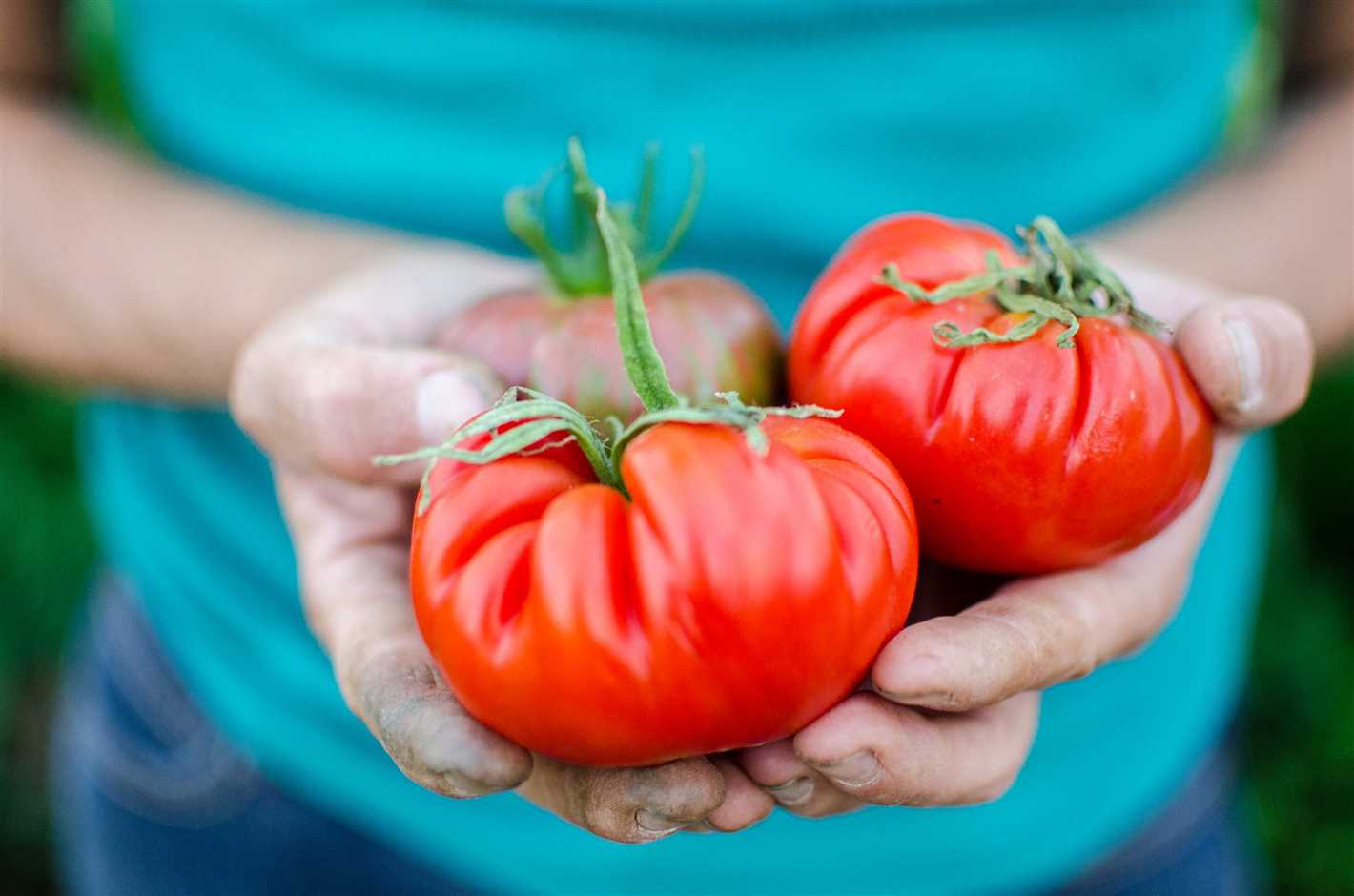
When selecting tomato varieties, it is important to consider your climate, available space, and personal preferences. Determinate varieties are compact and ideal for small gardens, while indeterminate varieties continue to grow and produce fruits throughout the season.
Additionally, consider the disease resistance of the varieties you choose, as some varieties are bred to be resistant to common tomato diseases such as blight and wilt.
2. Providing Adequate Sunlight:
Tomatoes thrive in full sunlight, requiring at least 6-8 hours of direct sunlight each day. Make sure to plant them in a location where they will receive abundant sun exposure.
3. Proper Soil Preparation:
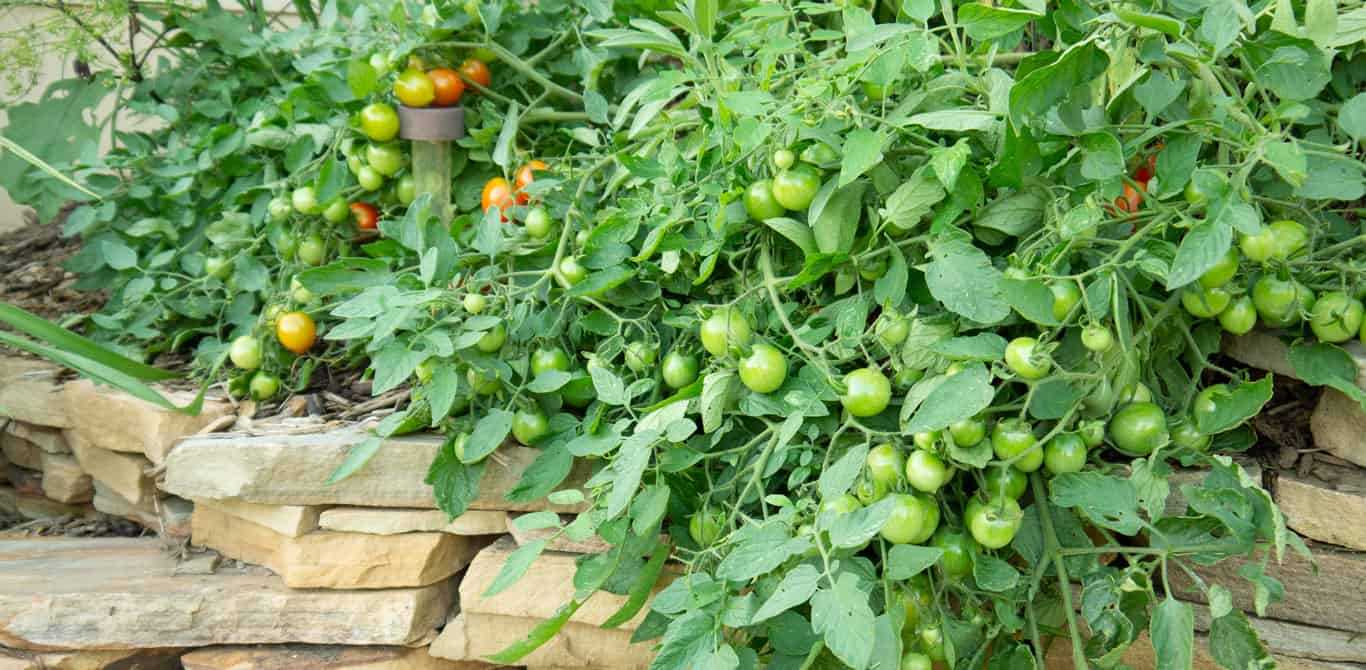
The soil should be well-draining and rich in organic matter. Prior to planting, incorporate compost or well-rotted manure into the soil to improve fertility and drainage. Avoid planting tomatoes in soil that has recently grown tomatoes, peppers, or eggplants to minimize the risk of disease.
4. Watering:
Consistent watering is crucial for the development of healthy tomato plants. Water deeply, keeping the soil evenly moist but not waterlogged. Avoid overhead watering, as it can increase the risk of fungal diseases. Instead, water at the base of the plants.
5. Mulching:
Applying a layer of organic mulch around tomato plants helps conserve moisture, suppress weeds, and regulate soil temperature. Use materials such as straw, wood chips, or compost to create a mulch layer around the base of the plants.
6. Providing Support:
Many tomato varieties benefit from some form of support to ensure proper growth and prevent the fruits from touching the ground. Options include using stakes, cages, or trellises to keep the plants upright.
7. Pruning and Training:
Pruning tomatoes can help maintain proper airflow and prevent the spread of diseases. Remove the suckers (the small shoots that grow in the leaf axils) to direct the plant’s energy towards fruit production. Use twine or soft ties to gently train the main stem as it grows.
8. Fertilizing:
Tomatoes are heavy feeders and require regular fertilization. Prior to planting, incorporate a balanced fertilizer into the soil. Once the plants start to set fruit, apply a tomato-specific fertilizer following the product’s instructions.
By following these practices, you can provide the optimal growing conditions for your tomatoes, ensuring a successful and rewarding harvest of delicious homegrown tomatoes.
Choosing the Right Tomato Variety
When it comes to growing tomatoes in your garden, choosing the right variety is crucial. With so many different types available, it can be overwhelming to decide which one to plant. Here are some important factors to consider when selecting a tomato variety:
Growth Habit
- Determinate: These tomatoes grow to a certain height and then stop, making them ideal for smaller garden spaces or containers.
- Indeterminate: Indeterminate varieties keep growing and producing fruit until the frost, making them perfect for larger gardens with plenty of space.
Size
The size of the tomato can vary greatly, so consider the purpose for which you plan to use them.
- Cherry tomatoes: Small and bite-sized, cherry tomatoes are perfect for salads and snacking.
- Roma tomatoes: These elongated tomatoes are great for making sauces and canning.
- Beefsteak tomatoes: Known for their large size and juicy flesh, beefsteak tomatoes are wonderful for sandwiches and burgers.
Flavor
Tomatoes come in a wide range of flavors, from sweet and tangy to rich and earthy. Consider the taste preferences of you and your family when selecting a variety.
Resistance
Some tomato varieties are more resistant to diseases, pests, and adverse weather conditions. Check for disease resistance when choosing your tomato plants to ensure a successful harvest.
Ripening Time
If you prefer to have tomatoes throughout the growing season, choose varieties that ripen at different times. This way, you can enjoy a continuous harvest of fresh, ripe tomatoes.
| Variety | Growth Habit | Size | Flavor | Resistance | Ripening Time |
|---|---|---|---|---|---|
| Early Girl | Indeterminate | Medium | Well-balanced | Resistant to diseases | 60-65 days |
| Sungold | Indeterminate | Cherry | Sweet and fruity | Resistant to cracking | 57 days |
| Roma | Determinate | Medium | Meaty and tangy | Resistant to verticillium wilt | 70-75 days |
| Brandywine | Indeterminate | Beefsteak | Rich and intense | Resistant to cracking | 80-90 days |
Factors to Consider for Low-Growing Tomatoes
1. Tomato Varieties
When selecting tomato varieties for low-growing cultivation, it’s important to choose varieties that are naturally compact and bushy. Some tomato varieties are specifically bred for this purpose and are often referred to as “determinate” or “bush” tomatoes. These varieties tend to have shorter internodes and require less pruning and training.
2. Soil Preparation
The quality of the soil is crucial for the successful cultivation of low-growing tomatoes. It’s recommended to use well-draining soil rich in organic matter. Incorporating compost or well-rotted manure into the soil can improve its fertility and provide essential nutrients for the plants. Testing the soil pH can also be beneficial to ensure it falls within the optimal range for tomato growth.
3. Spacing
Proper spacing is important for low-growing tomatoes to ensure adequate air circulation and sunlight penetration. Depending on the variety, space the plants at least 24 to 36 inches apart. This will allow the plants to bush out and prevent overcrowding, which can lead to disease and stunted growth.
4. Pruning and Training
To encourage low-growing bushy growth, it’s important to prune and train the tomato plants. Remove the suckers that grow in the leaf axils, as these can divert energy away from the main stem. Use tomato cages or stakes to provide support and train the plants to grow vertically. This will help prevent the branches from sprawling on the ground and minimize the risk of pest and disease infestation.
5. Watering and Mulching
Proper watering is essential for low-growing tomato plants. Water the plants deeply but infrequently, allowing the top inch of soil to dry out between watering sessions. Mulching around the plants with organic matter, such as straw or wood chips, can help conserve moisture, regulate soil temperature, and suppress weed growth.
6. Fertilization
Regular fertilization is necessary to ensure healthy growth and high yields of low-growing tomatoes. Apply a balanced fertilizer or a slow-release fertilizer according to the manufacturer’s instructions. Avoid excessive nitrogen fertilization, as this can promote excessive foliage growth at the expense of fruit production.
| Factor | Description |
|---|---|
| Tomato Varieties | Choose compact and bushy varieties specifically bred for low-growing cultivation. |
| Soil Preparation | Use well-draining soil rich in organic matter, and adjust pH if necessary. |
| Spacing | Plant tomatoes at least 24 to 36 inches apart to allow for proper bush growth. |
| Pruning and Training | Remove suckers and provide support to encourage vertical growth. |
| Watering and Mulching | Water deeply and mulch to conserve moisture and regulate soil temperature. |
| Fertilization | Apply a balanced or slow-release fertilizer to promote healthy growth and fruit production. |
Preparing the Soil
Before planting low-growing tomatoes in the open ground, it is important to prepare the soil properly. This will ensure that the plants have the necessary nutrients and conditions to grow and thrive.
1. Choose the right location
Tomatoes need plenty of sunlight to grow, so it is important to choose a location that receives at least 6-8 hours of direct sunlight per day. Additionally, the soil should be well-draining to prevent waterlogged roots.
2. Clear the area
Start by clearing the area of any existing plants, weeds, or debris. This will help prevent competition for nutrients and space and allow the tomatoes to establish themselves more easily.
3. Test the soil
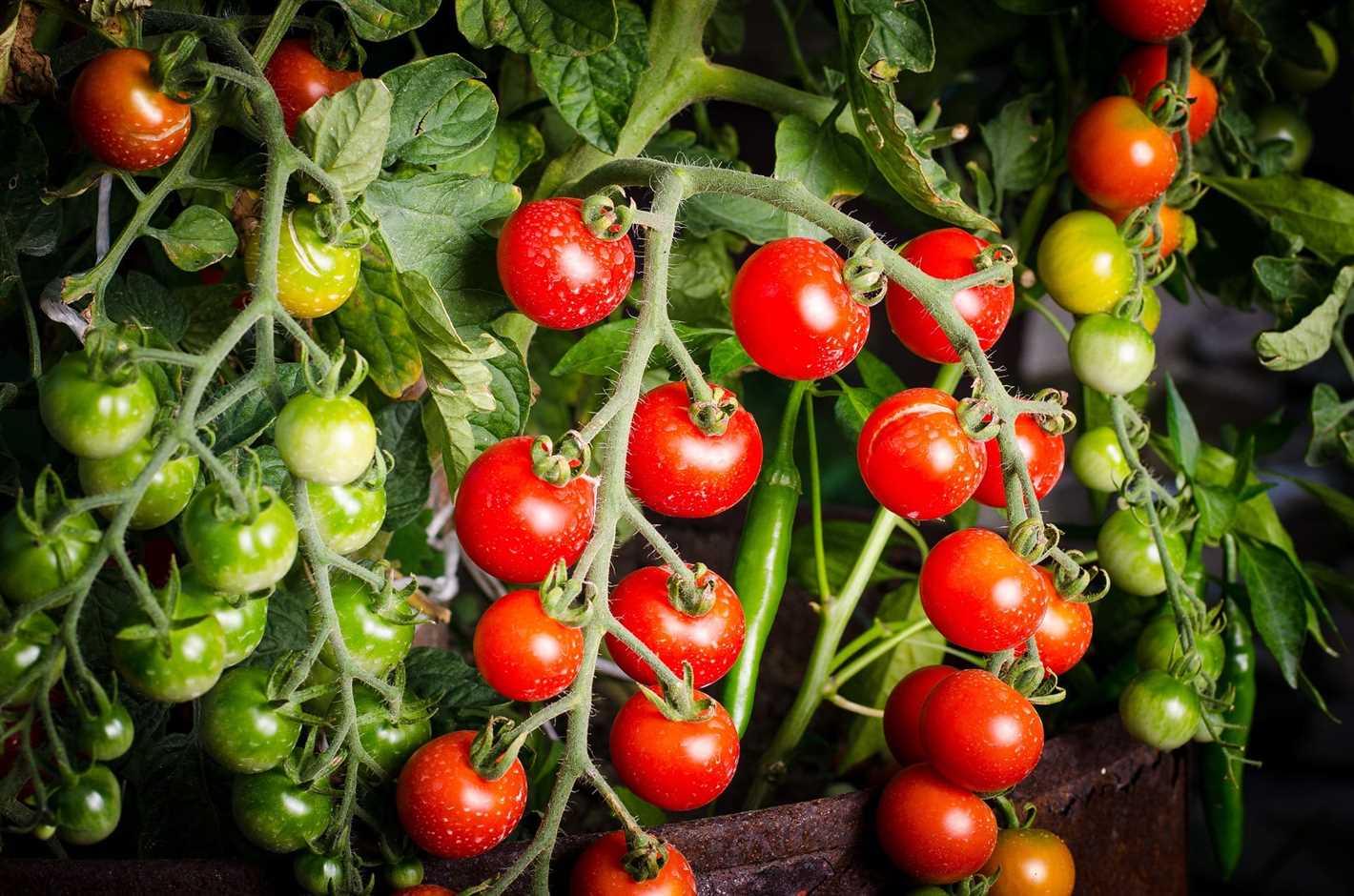
It is a good idea to test the soil pH and nutrient levels before planting. This can be done using a soil testing kit or by sending a sample to a soil testing lab. The results will help determine if any amendments are needed to adjust the pH or add nutrients.
4. Add organic matter
Adding organic matter, such as compost or well-rotted manure, to the soil is beneficial for tomato plants. This will improve the soil structure, fertility, and water-holding capacity. Spread a layer of organic matter over the soil and mix it in thoroughly using a garden fork or tiller.
5. Incorporate fertilizer
If the soil test indicates a deficiency in nutrients, incorporate a balanced fertilizer into the soil according to the package instructions. This will provide the necessary nutrients for the tomatoes to grow and produce fruit.
6. Create planting holes
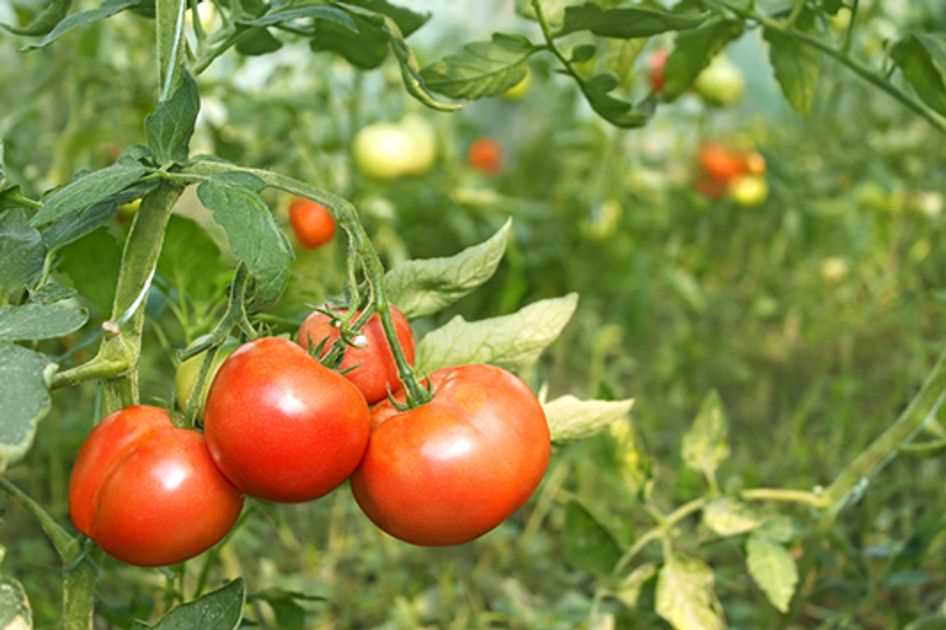
Using a trowel or garden shovel, create planting holes for the tomato plants. The holes should be deep enough to accommodate the root ball of the plant and spaced according to the recommended planting distance.
7. Water the soil
Before planting the tomato plants, thoroughly water the soil. This will help settle the soil and provide moisture for the plants after planting.
8. Mulch the area
After planting, apply a layer of organic mulch around the tomato plants. This will help conserve moisture, suppress weeds, and regulate soil temperature.
By preparing the soil properly, you can provide the optimal conditions for low-growing tomatoes to thrive in the open ground. This will help them conserve energy and focus on producing delicious fruits.
Creating the Perfect Environment for Low-Growing Tomatoes
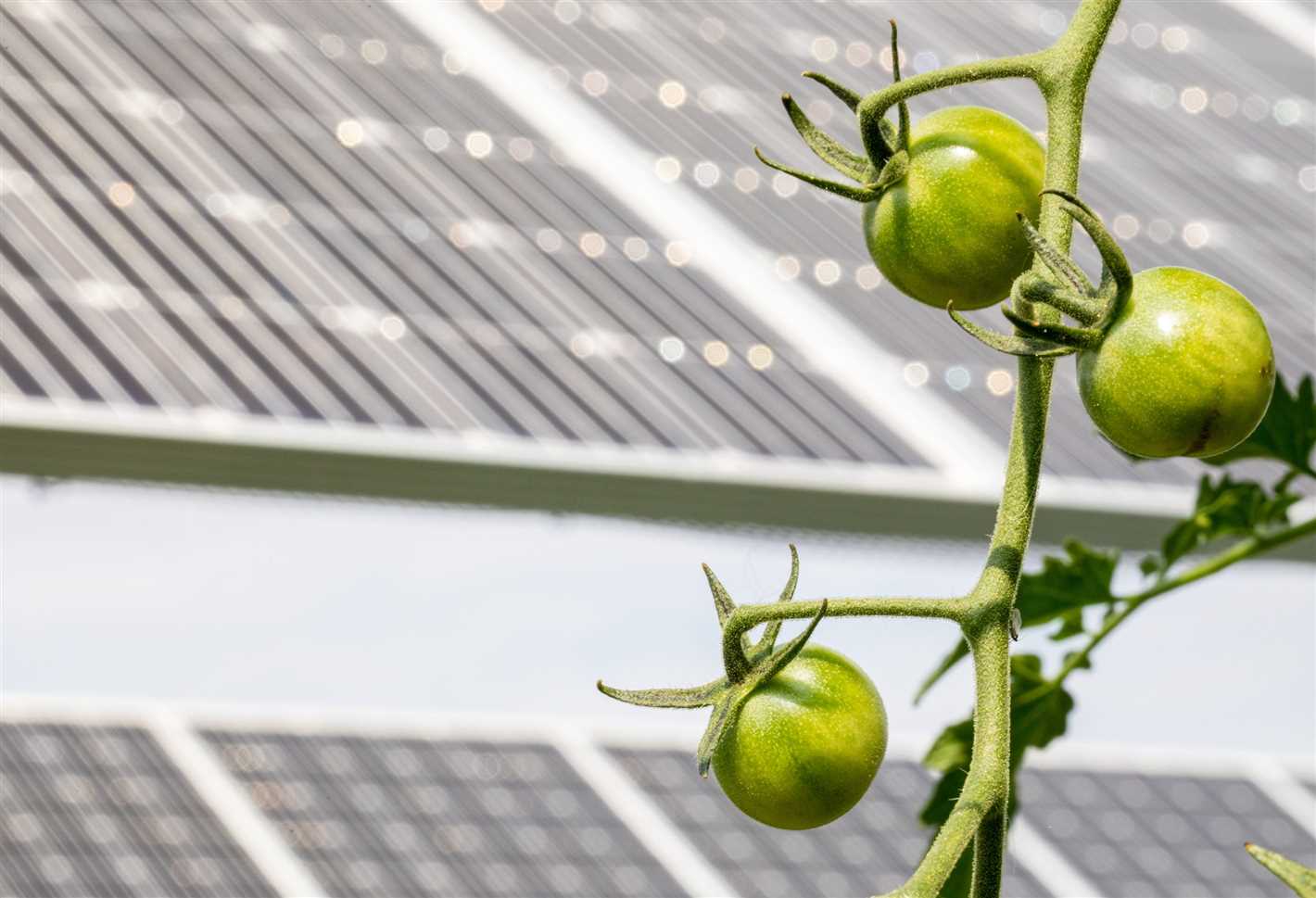
Growing low-growing tomatoes in the open ground offers many benefits, including conserving energy and saving space. By following a few simple steps, you can create the perfect environment for your low-growing tomatoes, ensuring they grow healthy and produce an abundant harvest.
1. Choosing the Right Tomato Varieties
When selecting tomato varieties for low-growing cultivation, look for determinate or dwarf varieties that naturally stay compact and don’t require extensive staking or trellising. Some popular options include Tiny Tim, Red Robin, and Patio Princess.
2. Preparing the Soil
Tomatoes thrive in well-draining, fertile soil. Before planting, prepare the soil by removing any weeds and adding organic matter such as compost or aged manure. This will improve the soil structure and provide essential nutrients for the plants.
3. Planting Your Low-Growing Tomatoes
When planting low-growing tomatoes, space them according to the variety’s recommended spacing guidelines. Typically, this will be around 12-18 inches apart. Dig a hole slightly deeper than the root ball and gently place the tomato plant, ensuring the soil is firmly packed around the roots.
4. Mulching
Applying a layer of mulch around the base of your tomato plants helps conserve moisture, suppress weeds, and maintain more consistent soil temperatures. Use organic mulch like straw, leaves, or grass clippings, and spread it evenly around the plants, leaving a small gap around the stem to prevent rotting.
5. Watering and Fertilizing
Tomatoes require consistent watering to promote optimal growth and fruit development. Water deeply but less frequently to encourage deeper root growth. Additionally, fertilize regularly with a balanced organic fertilizer or compost to provide essential nutrients throughout the growing season.
6. Pruning and Training
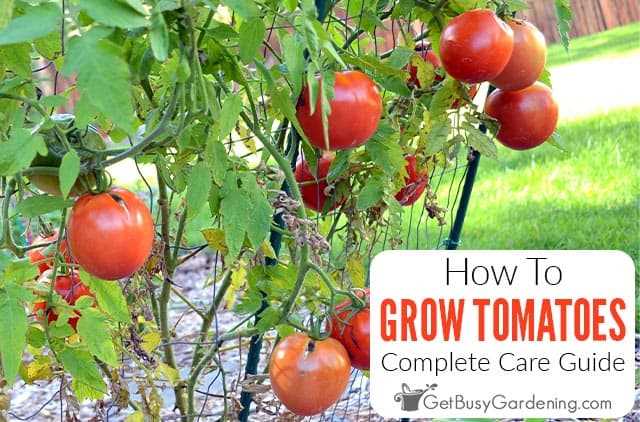
To support low-growing tomatoes, selectively prune the side shoots or suckers that develop in the leaf axils. This helps maintain a compact growth habit and channel the plant’s energy into fruit production. Additionally, loosely tie the main stem to a stake or cage to provide additional support.
7. Pest and Disease Control
Regularly inspect your low-growing tomato plants for signs of pests, such as aphids or tomato hornworms, and take appropriate measures to control them. Additionally, monitor for common tomato diseases like blight or wilt and promptly treat or remove affected plants to prevent the spread.
8. Harvesting
As your low-growing tomatoes mature, regularly check for ripeness by gently squeezing the fruit. Once they are firm yet slightly soft, they are ready to be harvested. Pick them carefully, leaving a small portion of the stem intact to prolong their shelf life.
By creating the perfect environment for your low-growing tomatoes, you can enjoy a bountiful harvest while conserving energy and space in your garden. Follow these steps, adapt to your specific climate and conditions, and soon you’ll be reaping the rewards of your hard work and dedication.
Planting the Tomato Seedlings
Preparing the Soil
Before planting your tomato seedlings, it’s important to prepare the soil properly to ensure healthy growth. Here are the steps you should follow:
- Choose a sunny spot in your garden with well-draining soil.
- Remove any weeds or debris from the area.
- Loosen the soil with a garden fork or tiller to improve aeration and drainage.
- Mix in organic matter such as compost or well-rotted manure to enrich the soil.
- Level the soil surface using a rake to create a smooth planting bed.
Transplanting the Seedlings
Once your soil is prepared, it’s time to transplant your tomato seedlings into the ground:
- Water the seedlings thoroughly a few hours before transplanting to reduce the risk of transplant shock.
- Dig a hole for each seedling, making sure it is deep enough to cover the root ball completely.
- Remove the seedling carefully from its container, gently loosening the roots if they are bound.
- Place the seedling in the hole and backfill with soil, firming it gently around the stem.
- Water the seedlings again after transplanting to help them settle in the new soil.
Providing Support
Tomato plants tend to grow tall and may require support to prevent them from falling over or breaking under the weight of their fruits. Here are a few options for providing support:
- Install stakes or cages near each tomato plant before they grow too large.
- Tie the main stem of the plant to the stake or cage using soft garden twine or plant ties.
- As the plant grows, gently tie additional branches to the support structure to keep them upright.
Maintaining the Seedlings
After planting, it’s essential to take proper care of your tomato seedlings to ensure optimal growth and productivity. Here are some tips:
- Water the plants regularly, keeping the soil evenly moist but not waterlogged.
- Apply a layer of organic mulch around the plants to help retain moisture and prevent weed growth.
- Monitor for pests and diseases regularly and take appropriate action if necessary.
- Fertilize the plants with a balanced organic fertilizer according to the manufacturer’s instructions.
- Prune the plants as needed to maintain good airflow and remove any diseased or damaged foliage.
Conclusion
By following these steps, you can ensure successful planting of your tomato seedlings and enjoy a bountiful harvest. Remember to provide proper support and care throughout the growing season to maximize yield and quality.
A Step-by-Step Guide to Ensure Healthy Growth
Growing low-growing tomatoes in the open ground can be a rewarding experience. With the proper care and support, your tomatoes can thrive and produce an abundance of delicious fruits. Follow these steps to ensure healthy growth:
1. Prepare the soil
Start by preparing the soil in your garden bed. Tomatoes prefer well-draining soil with plenty of organic matter. Remove any weeds or debris and amend the soil with compost or aged manure to improve its fertility.
2. Choose the right spot
Find a spot in your garden that receives at least 6-8 hours of sunlight a day. Tomatoes require plenty of sunlight to grow and develop properly. Avoid areas that are shaded by trees or buildings.
3. Plant the seedlings
When your seedlings are ready to be planted, dig a hole that is wide and deep enough to accommodate the roots. Gently remove the seedling from its container and place it in the hole. Fill the hole with soil, making sure to cover the roots completely. Tamp down the soil to remove any air pockets.
4. Provide support
Low-growing tomatoes benefit from support to keep them off the ground and prevent rotting. Place a stake or a cage near the seedling and gently tie the main stem to the support using twine or soft plant ties. Make sure not to tie it too tightly to allow room for growth.
5. Water regularly
Tomato plants require regular watering to stay hydrated and to prevent blossom end rot. Water deeply once or twice a week, making sure the soil is evenly moist. Avoid overhead watering as it can lead to disease. Consider using a drip irrigation system or a soaker hose.
6. Mulch the soil
Apply a layer of organic mulch around the plants to help conserve moisture, suppress weeds, and regulate soil temperature. Straw, wood chips, or shredded leaves make excellent choices for mulch.
7. Prune and remove suckers
To ensure healthier growth and better airflow, prune the lower branches of the tomato plant. Additionally, remove any suckers that develop in the leaf axils. This will direct the plant’s energy towards fruit production.
8. Fertilize as needed
Monitor the growth of your tomato plants and fertilize them as needed. Use a balanced fertilizer or incorporate organic matter into the soil. Follow the manufacturer’s instructions for application rates.
9. Monitor for pests and diseases
Regularly inspect your plants for pests such as aphids, tomato hornworms, or whiteflies. If you notice any signs of disease, such as wilting or yellowing leaves, take immediate action to prevent the spread. Consider using organic pest control methods or consult with a local gardening expert.
10. Harvest ripe tomatoes
Once your tomatoes start to ripen, harvest them regularly to encourage more fruit production. Gently twist or cut the ripe tomatoes from the vine, taking care not to damage the plant. Enjoy the fresh taste of homegrown tomatoes!
By following these steps, you can ensure healthy growth and a bountiful harvest of low-growing tomatoes in your garden. With a little care and attention, your plants will thrive and provide you with delicious fruits throughout the growing season.
Providing Proper Support
When it comes to growing low-growing tomatoes in the open ground, providing proper support is essential for their healthy growth and productivity. Without adequate support, the tomato plants can suffer from sprawling growth and become vulnerable to diseases and pests. Here are some easy methods to provide support to your low-growing tomatoes:
- Stakes: One of the most common methods of supporting low-growing tomatoes is by using stakes. Drive a sturdy wooden or metal stake into the ground near each tomato plant, ensuring it is firmly anchored. Tie the main stem of the tomato plant to the stake with a soft material, such as twine or fabric strips. As the tomato plant grows, continue to tie it to the stake at regular intervals, providing support and preventing it from bending or breaking.
- Cages: Another popular method is to use tomato cages. These cylindrical structures are made of metal or wire and provide support to tomato plants as they grow. Simply place the cage around the young tomato plant and secure it into the ground. As the tomato plant grows, the branches will naturally grow through the cage, giving them support and preventing them from spreading out. Cages are especially beneficial for indeterminate tomato varieties that can grow quite tall.
- Trellis: A trellis is a vertical structure made of wood or metal that allows tomato plants to climb and grow upwards. Install a trellis system in your garden and guide the tomato plants to grow along the trellis using gentle ties. As the tomato plants mature, they will naturally cling to the trellis, saving space and providing efficient support. Trellising is a great option for small garden spaces or for those who prefer vertical gardening.
Regardless of the method you choose, it is important to provide support to your low-growing tomatoes early in their growth stage. This will help train them to grow vertically, improve air circulation around the plants, and make it easier for you to harvest the fruits. Choose a support method that suits your needs and the specific variety of tomatoes you are growing. With proper support, your low-growing tomatoes will thrive and reward you with a bountiful harvest.
“Question-Answer”
What is the best method to fasten low-growing tomatoes in the open ground?
The best method is to use stakes or cages to support the tomato plants and keep them from sprawling on the ground. This helps the plants to grow upright and allows for better air circulation and sunlight exposure.
Why is it important to fasten low-growing tomatoes?
Fastening low-growing tomatoes is important to prevent them from lying on the ground and getting damaged. When tomatoes are in contact with the soil, they are more prone to rot, pests, and diseases. By fastening them, you can protect the fruit and ensure healthier plants.
What are the benefits of using stakes to support tomato plants?
Using stakes to support tomato plants has several benefits. Firstly, it helps the plants grow upright, which improves air circulation and reduces the risk of diseases. Secondly, it allows for better sunlight exposure, leading to more efficient photosynthesis and better fruit development. Lastly, staking makes it easier to harvest the tomatoes and prevents them from touching the ground.
Are there any alternative methods to fasten low-growing tomatoes?
Yes, there are alternative methods to fasten low-growing tomatoes. One option is to use tomato cages, which are wire structures that surround the plants and provide support. Another option is to use trellises or strings, where the tomato plants are tied to a vertical structure. The choice of method depends on personal preference and the specific needs of the tomato plants.
How can fastening low-growing tomatoes save energy?
Fastening low-growing tomatoes can save energy by reducing the need for constant maintenance and care. When tomato plants are properly supported, they require less attention and intervention. This means less time spent on pruning, tying, and preventing them from sprawling. The saved energy can then be directed towards other crucial tasks in the garden.







